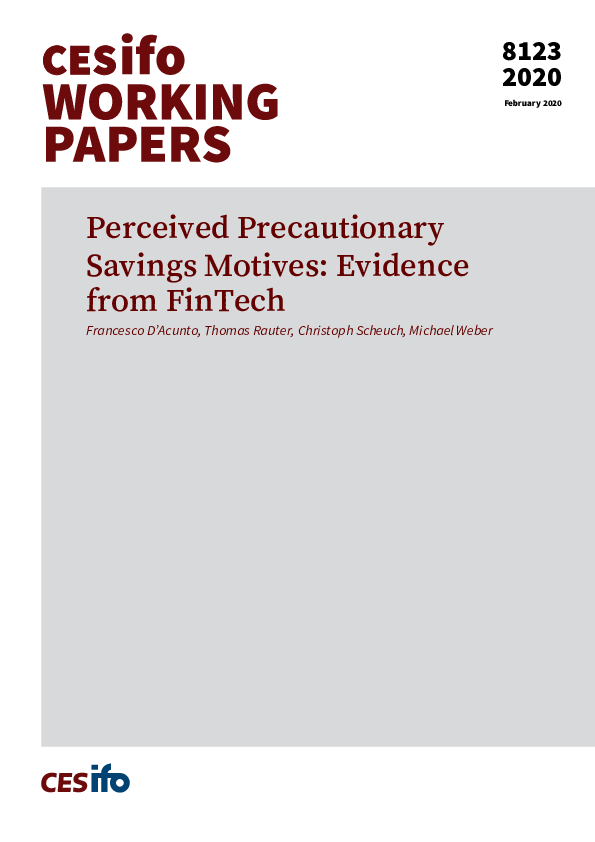Perceived Precautionary Savings Motives: Evidence from FinTech
CESifo, Munich, 2020
CESifo Working Paper No. 8123

We study the spending response of first-time borrowers to an overdraft facility and elicit their preferences, beliefs, and motives through a FinTech application. Users increase their spending permanently, lower their savings rate, and reallocate spending from non-discretionary to discretionary goods. Interestingly, liquid users react more than others but do not tap into negative deposits. The credit line acts as a form of insurance. These results are not fully consistent with models of financial constraints, buffer stock models, or present-bias preferences. We label this channel perceived precautionary savings motives: Liquid users behave as if they faced strong precautionary savings motives even though no observables, including elicited preferences and beliefs, suggest they should.
Fiscal Policy, Macroeconomics and Growth
Behavioural Economics